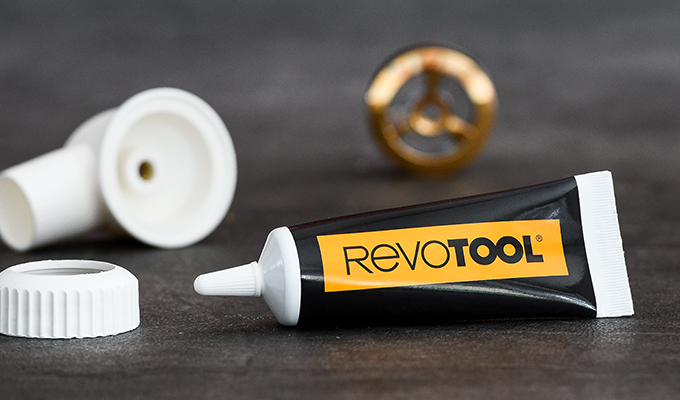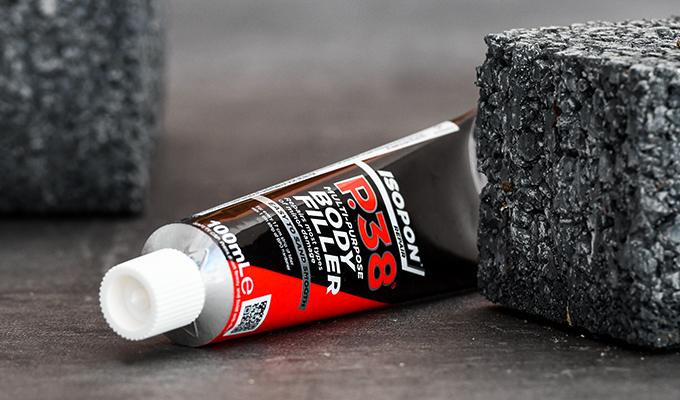


etma member companies are producing about eleven billion flexible tubes with a constant moderate growth over the last few years. Coupled with the tube’s high degree of acceptability by consumers worldwide, this growth has given the European tube manufacturers a general air of confidence. In addition to the markets of eastern Europe, there are major growth opportunities primarily in the emerging economies of Asia and South America.
Slightly less than 50 per cent of the tubes produced in Europe are used in the cosmetics sector, with 20 per cent each in the toothpaste sector and the pharma industry. About 8 per cent of tubes are used for foodstuffs, while household and industrial products account for a share around 5 per cent.

Slightly less than 50 per cent of all tubes produced in Europe go into the cosmetics sector. The outlook for this market segment continues to be good. Rising incomes in eastern European countries and a continually improving standard of living will further intensify demand for cosmetic products. This is particularly true also for the markets of Asia and South America with their fast-growing economies and a lifestyle that is increasingly matching that in Europe and North America.
Depending on the contents, aluminium, laminate or plastic tubes are used in the cosmetics industry. Important products are hair colourants and hair care, skin care preparations, and soap and other cleaners. And not forgetting shaving cream.
With its outstanding properties, the tube scores in particular in the cosmetics sector, where constituents are sometimes expensive: exact dosage, economical in use and precise application thanks to practical closures and special dispenser solutions. With roller-ball systems and other intelligent solutions available for an improved and more direct effect. In addition, the tube is very hygienic and well protected against product counterfeiting.
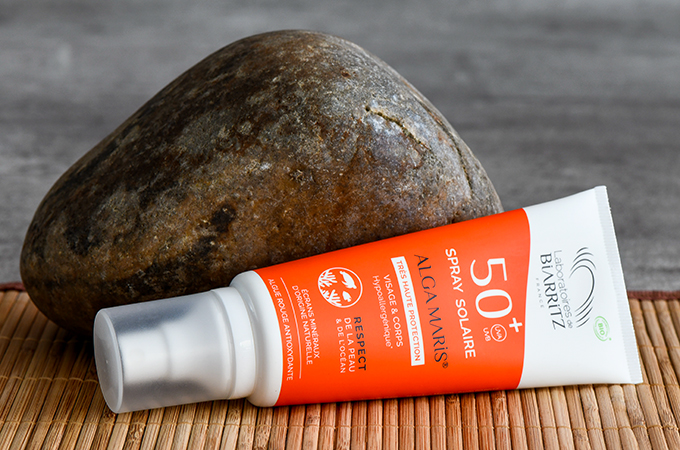

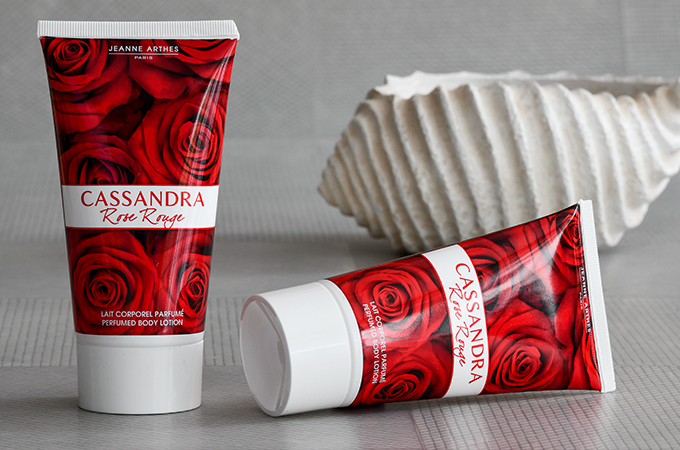
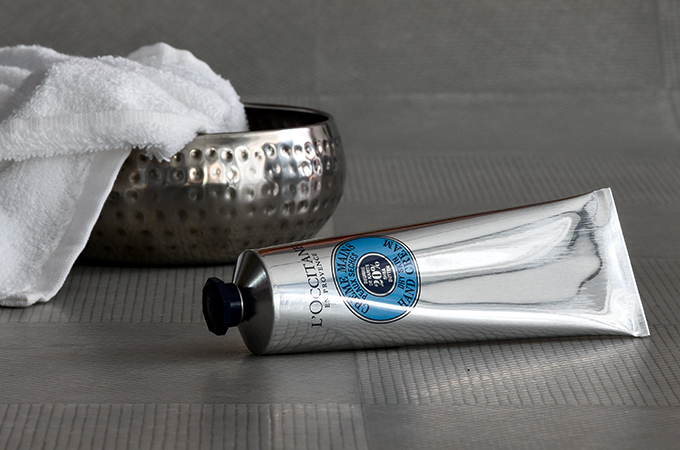

The pharmaceutical sector’s share of tube production in Europe has remained steady at over 20 per cent for many years. Improved health services in eastern Europe and the emerging countries of South America and Asia coupled with rising per-capita income means demand will increase considerably. These opportunities should also benefit the tube.
Although increased numbers of plastic and laminate tubes are being used in the pharma sector today, aluminium tubes still account for the lion’s share because of their specific benefits: good sterilisability guarantees perfect standards of hygiene, and outstanding barrier properties ensure optimal protection of sensitive contents and ensure that important constituents cannot escape. This means preparations remain fully effective for long periods of time.
All tubes allow contents to be removed hygienically and applied accurately in the exact prescribed dosage. Special dispenser and application systems also help. Last but not least, sophisticated tamper-proof solutions and efficient protection against product counterfeiting make the tube an even more valuable form of packaging, particularly in the sensitive medical field.


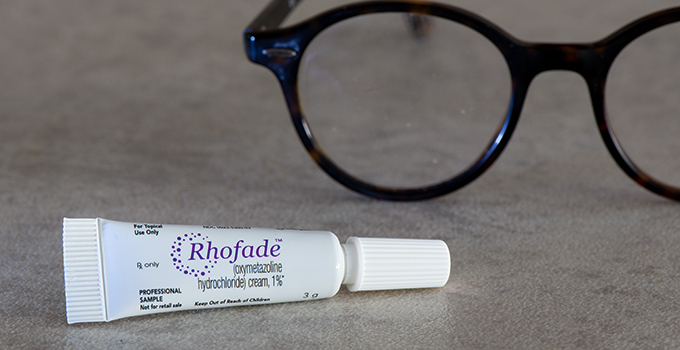

About 20 per cent of all tubes produced in Europe are used for toothpaste and other dental care products. The market share is relatively stable. If one uses the US per capita consumption as a yardstick, however, there is enormous market potential even in Europe but above all in the major economies of Asia and South America – something that inspires growth fantasies.
Nowadays only a few products in the dental care field – mainly medicinal toothpastes and special products – are sold in aluminium tubes. All the others are made of plastic, and the vast majority of these are laminate tubes.
This is something that suits advertisers, marketing specialists and designers. It means that on the shelf at the point of sale most of the rather large-volume stand-up tubes offer considerably more surface for presenting logos, brand messages, eye-catching decorative elements or important product information.
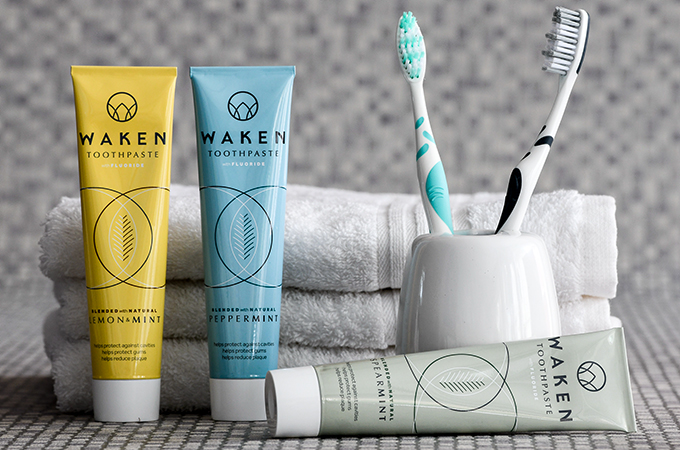
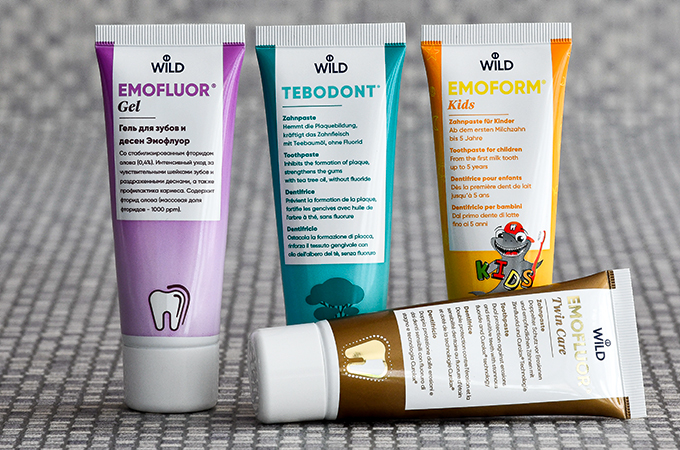

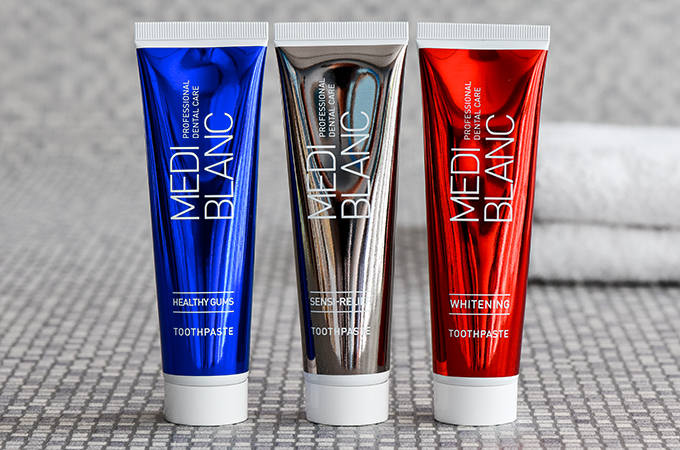
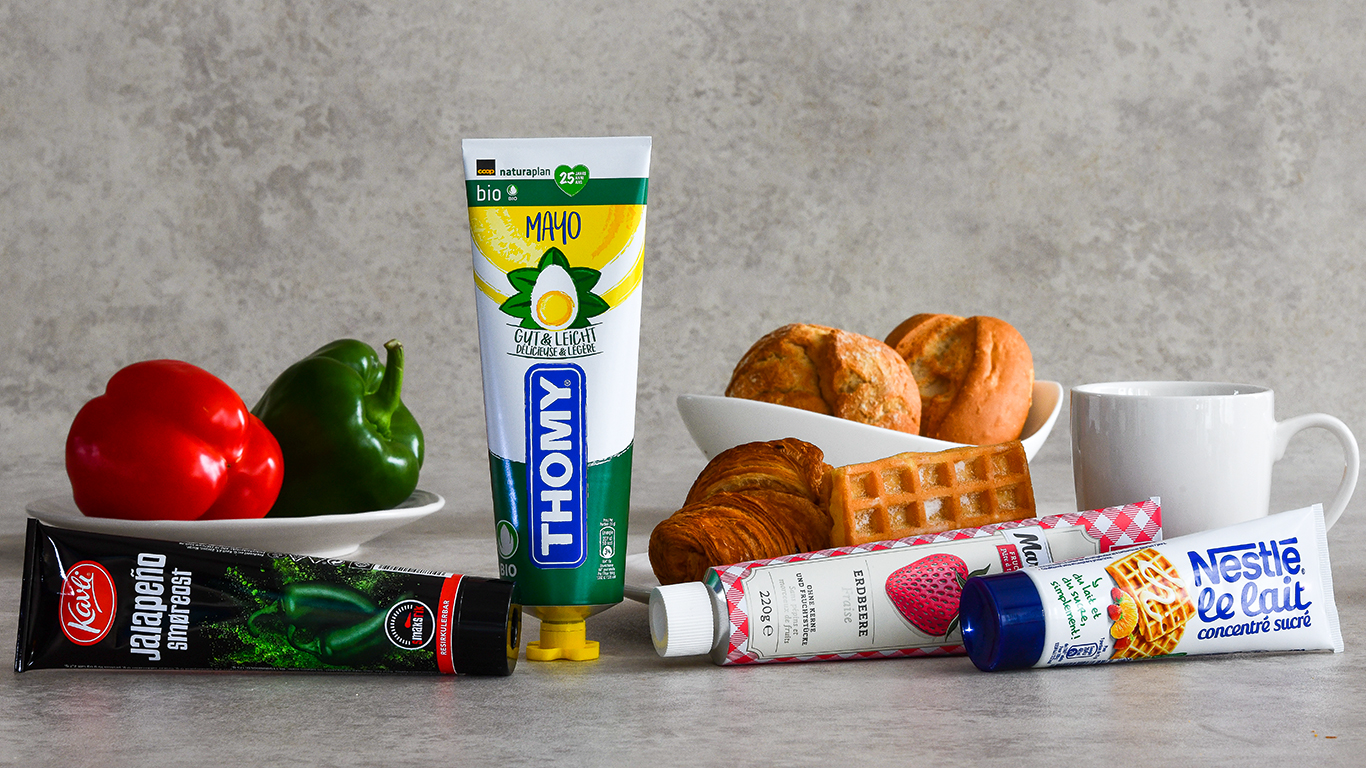
The food sector takes about eight per cent of the tubes produced in Europe. Here, too, the tube’s user-friendly aspects count in its favour and it is increasingly being regarded as a modern and up-to-date form of packaging.
It offers convenient handling, is easy to open, and above all, close again, makes portioning simple, and is lightweight and unbreakable. All of these benefits speak for the tube in a sector where it is no longer only used for mustard, mayonnaise and ketchup. Nowadays fish pastes, cheese and butter products, and creams play an important role. Dietary supplements, every type of sweet paste, smoothies and even trendy cold drinks are particularly popular with young people. In addition, the excellent barrier properties ensure no preservatives need to be used and the contents have optimal protection against deterioration until the very end. This means there is no unnecessary wastage of resources used to produce the foodstuffs.
The tube’s versatility offers opportunities for product differentiation or product innovation, not least with beverages and foodstuffs. Let us look forward to seeing some new creative ideas.

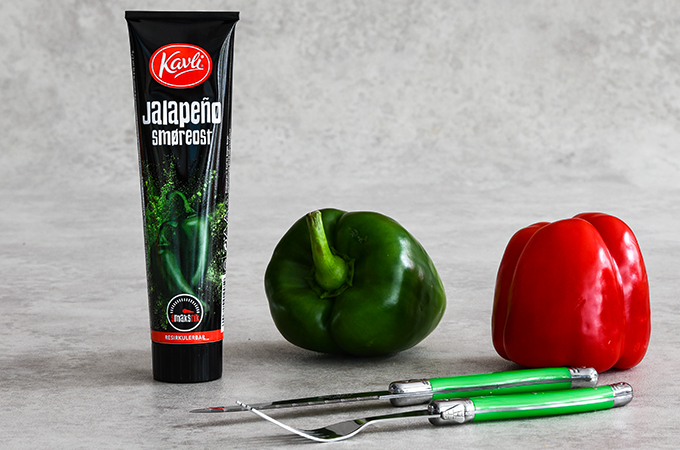
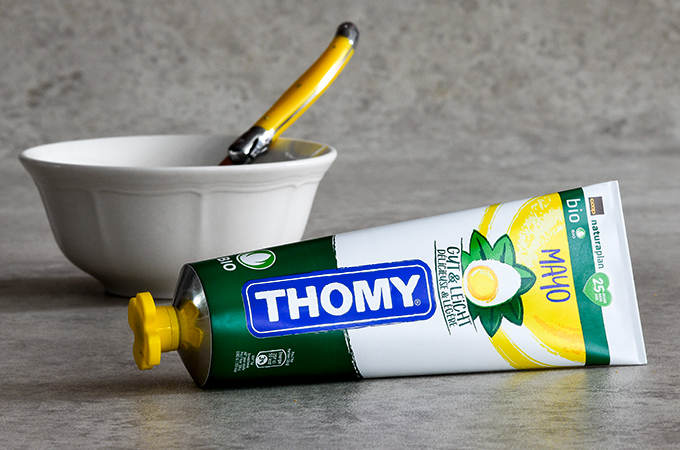
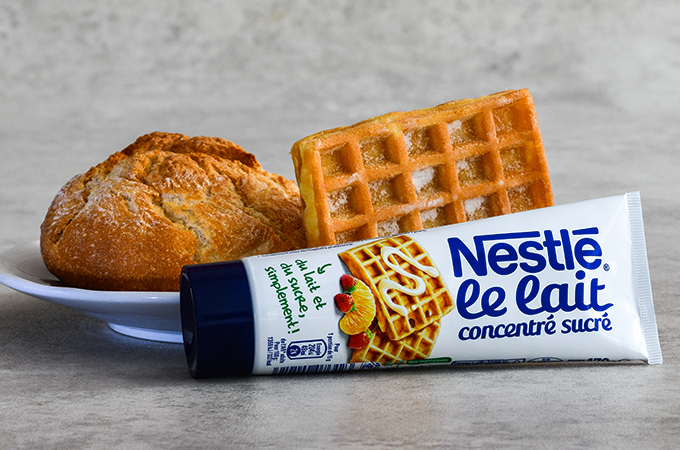
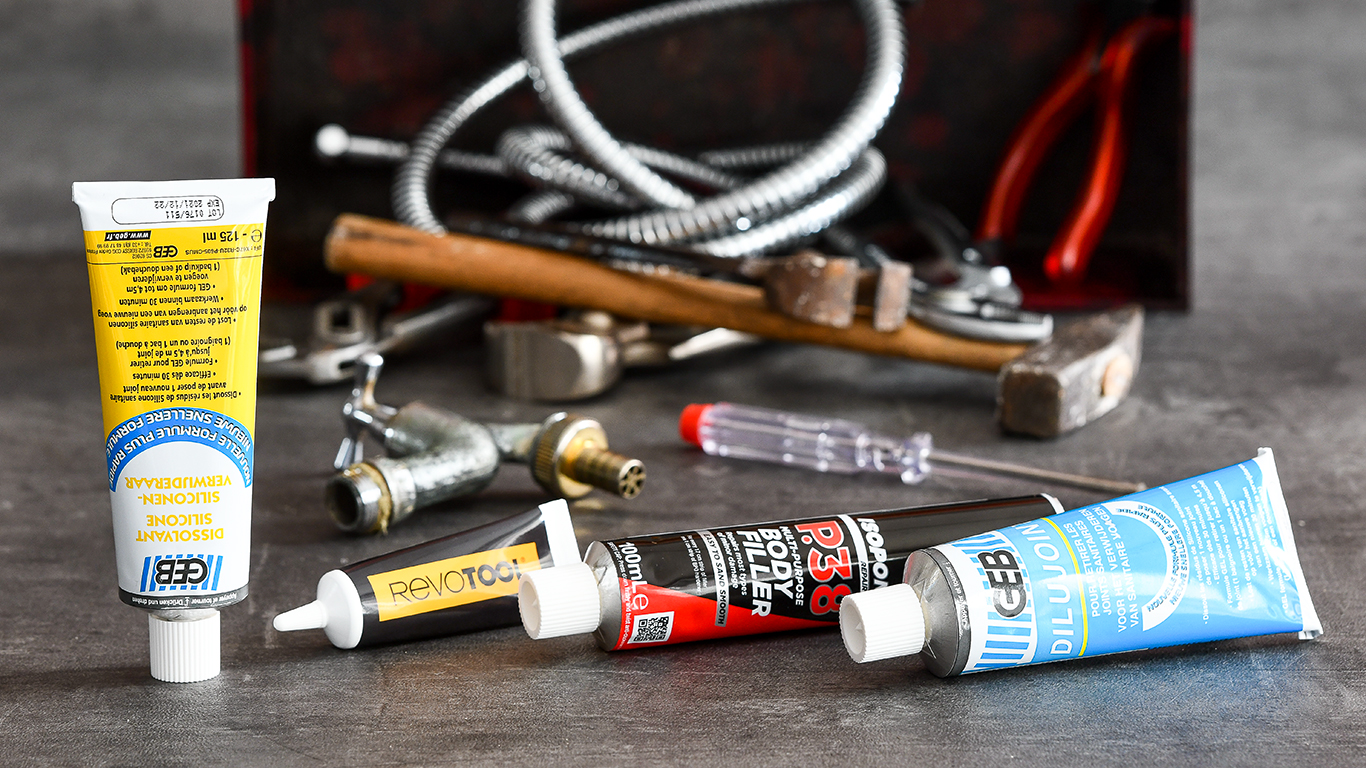
About five per cent of all tubes are used for household or industrial products. To a large extent the respective contents determine the tube material.
The range of products available in tubes is as diversified as the ramified sectors of the individual branches of industry. Especially in the techno-industrial field one often finds highly specialised products known only to a few experts and professionals: special paints and lacquers, glues and adhesives, cleaning paste, pasty oils and greases and other lubricants, silicones and special cleaners to name but a few.
In the household, though, the main applications besides adhesives and paints are cleaning products, soaps and the like, stain removers and other additives, and shoe polish. Quite a few of these products have been on the market almost unchanged for 50 years, and some for nigh on 100 years. World-famous brands with a long tradition, some of which have achieved cult status. The best evidence to show that the tube is still a modern and up-to-date form of packaging.

